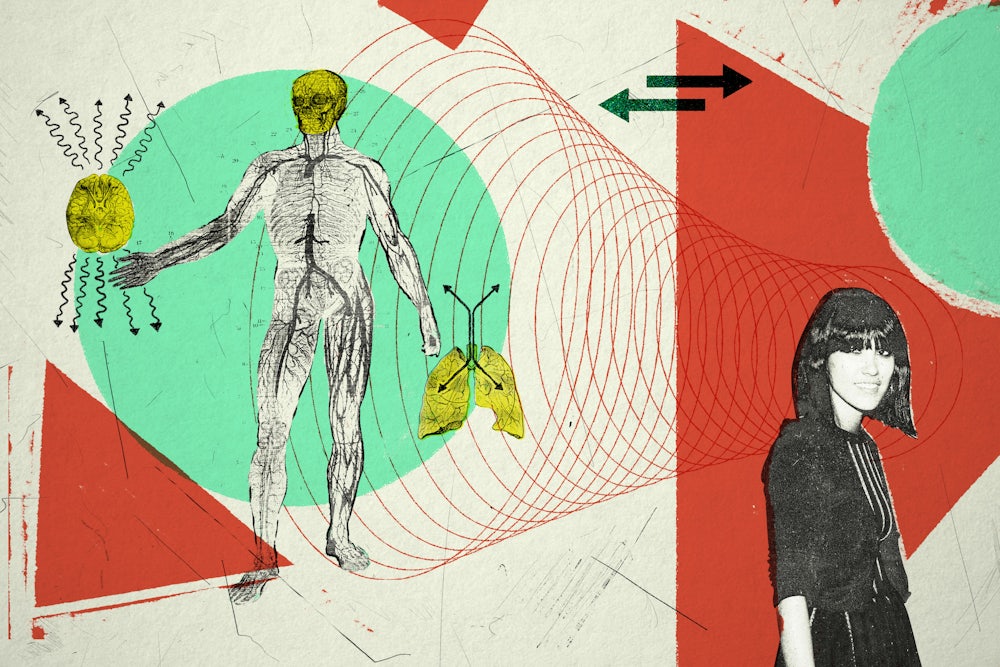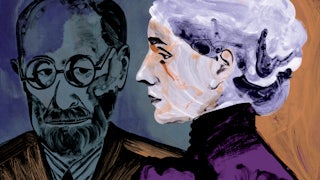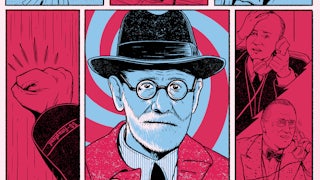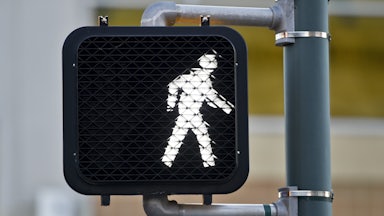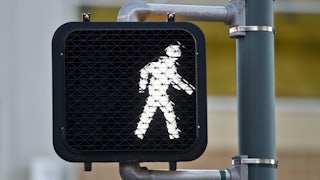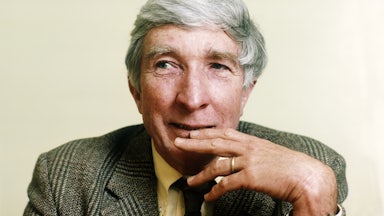In the first few pages of On Breathing, the psychoanalyst Jamieson Webster remembers a patient who responded to a bad heartbreak by obsessively tracking her breathing against her heartbeat. In forcing herself to think constantly about something that under normal circumstances we do instinctively and thoughtlessly, the woman “drove herself half mad,” Webster writes. We are, as she puts it, meant to forget that we are breathing. Later, we meet another patient, a gay man who had suffered a long history of institutionalized sexual abuse and developed an affinity for autoerotic asphyxiation. The patient regularly used drugs, and deliberately increased his risk of contracting HIV by avoiding sexual protection. In Webster’s account, he was connecting breathing with danger and death. Sometimes, without entirely knowing why, she found herself whispering during their sessions. “It felt like … an attempt to find an unconstrained breath that wasn’t tied to death, asphyxiation or rage,” she writes.
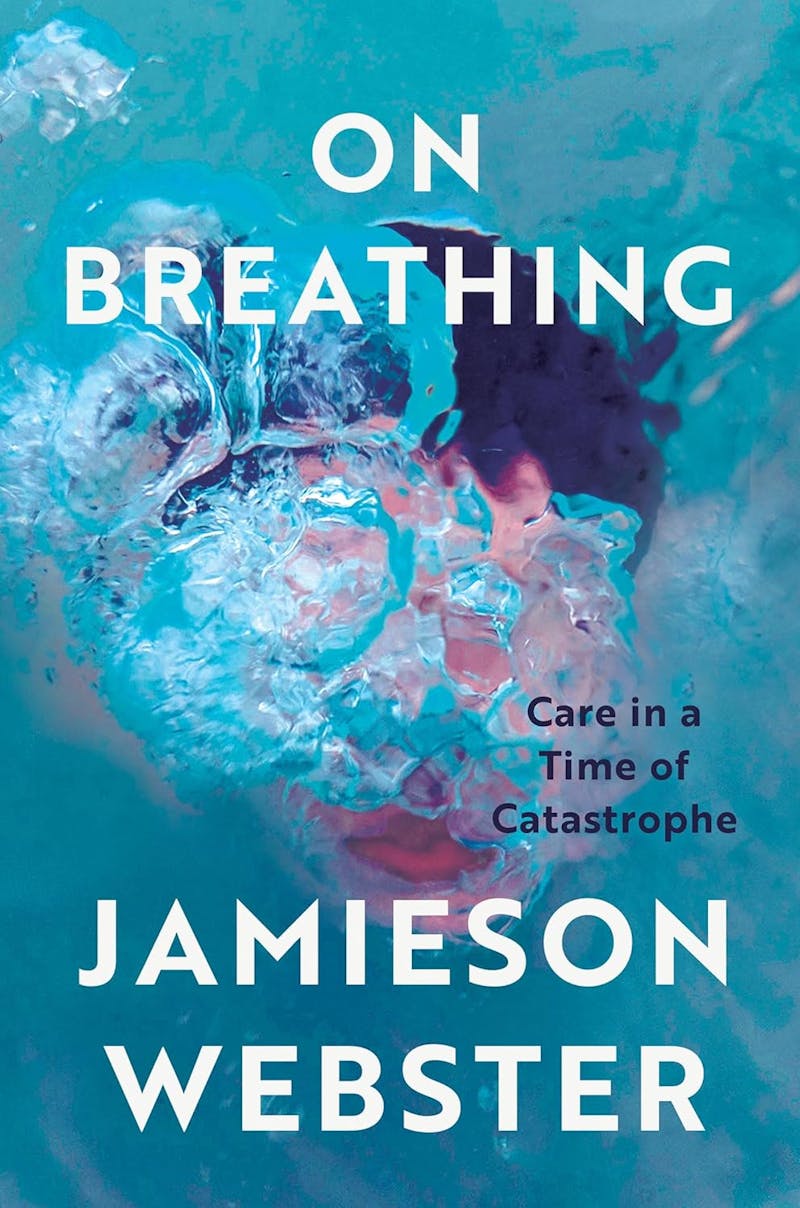
Elsewhere in On Breathing, a thoughtful exploration of breath through the lens of psychoanalytic thinking, Webster recounts her experience working as a palliative psychologist in a hospital intensive care unit during the first wave of the Covid outbreak, that strange time when breathing our shared air could be quickly lethal. (The toxicity of air in our polluted world is otherwise easy to forget.) The ICU was odd, she explains. While it housed the patients who were closest to death, it was much safer than other wards because the patients there, comatose and breathing through machines, were no longer spreading the virus by talking, coughing, sneezing, or “normal” respiration. Webster describes the ICU as an environment of ghostly calm. Although it was impossible to disturb the patients, there was an unspoken rule that everyone worked in silence. The nurses seemed to float around the hospital beds. “It almost felt like we were all already dead,” Webster remembers. “By choosing to be here, I was trying to get away from the patients who were anxiously struggling to breathe.”
Breathing, as these anecdotes show, fades quietly into the background until some emotional, environmental, or physical rupture forces us to pay attention to it—a perfect subject for a psychoanalyst, then, whose bread and butter could be said to be the excavation of repressed material. “From the moment of birth, breathing is something we must do for as long as we are alive, yet for the most part we don’t pay it much notice,” Webster observes. “If one of the main claims of psychoanalysis is that we forget sexuality, I think we must add breathing to our list of amnesias.” By way of elegant digressions through theory, anecdotes from her practice, and stories from her own life, Webster argues that in forgetting the significance of the act of breathing—forgetting the reality of our shared dependence on air—we bury the significance of certain experiences in our lives and ignore our profound interconnectedness. But one of the many strengths of this strikingly intelligent, rigorous, and unusual book is that Webster does not corral her stories too forcefully toward this one thesis, or present only the information that would advance a single argument, an approach that helps her avoid unconvincing, forced connections and makes room for an appealing strangeness.
Throughout the essays, her tone is authoritative but more curious than argumentative. When she refers to research, she is rarely simply citing data to back up a point she has made. Likewise, the personal anecdotes Webster describes tend not to be moments from which one neat life lesson can be learned or inferred, and she does not present them as such. She often poses questions and leaves them unanswered, explicitly inviting more thought from the reader. She describes the hospital where she worked during the pandemic, for example, as a tense and fearful environment where, as in all hospitals, anxiety and fear may have influenced decision-making. Staff rushed to intubate patients on ventilators. “We only later understood that intubation often diminished a patient’s chances of survival,” she writes, but she notes that not using ventilators would also have required staff to tolerate their own fear of infection from breathing patients. She writes: “In this reliance on intubation, I can’t help but wonder, who was being protected?” Maybe ventilators seemed like the only possible solution, or maybe everyone was panicking. There is no way to know. But just because there is no definitive answer, these essays gently insist, does not mean the question is not worth thinking about.
On Breathing is a short book, but it covers a surprising amount of ground. As well as these medical settings, there are strands of Webster’s personal life: her history of asthma, her scuba diving, the collection of tropical pets she had as a child in Florida (one hamster was squashed by a closing door and suffocated), the death of her father, the birth of her daughter. She is adept at relaying personal information in a manner free of overwrought emotional declarations but deeply moving all the same. Of her father, a pilot who grew up in poverty and prided himself on his independence, she writes: “I realized too late how much I wanted to help him; how little space I was given to do so.”
Formally, the book is broken into short essays, each around 10 pages long or shorter. The structure reminded me of the sessions of a psychoanalytic treatment. Grouped under four themes—First Breath, Anxiety, Asphyxiation, and Last Words—the essays overlap in subject, and sometimes an observational thread from one essay will follow through to the next or appear again a few essays later, the way certain moments or behavioral patterns are discussed again and again in therapy. “I have always felt that psychoanalysis is closer to poetry than narrative,” Webster writes at one point, and On Breathing, which is often poetically beautiful and surprising, could be described this way too. (Of analyzing dreams and nightmares, for instance, Webster writes, “I always liked this task; turning the nightmare inside out like a glove to see its soft, colorful inside.”)
Again and again, Webster guides the reader through surprising material, fluidly making genuinely unexpected links as she goes. And again and again she resists a declarative ending. (In this sense too, reading On Breathing reminded me of analysis sessions, and encountering the forgotten memories that are unearthed, which feel so out of place from “real life,” and then the growing acceptance of their essential subjectivity, the impossibility of one accepted narrative.) If something is strange or hard to explain, it is allowed to be. In one section, Webster describes the work of Dr. Catherine Vanier, a psychoanalyst who worked in a neonatal intensive care unit in Paris. Vanier was curious about why some premature infants, or “preemies,” survived while others in similar conditions did not. “For many years, I had heard of a mythical creature,” Webster writes. “This analyst would whisper to the babies their history, the conditions of their coming to be born, and who their parents were, in an effort to speak them into life.” Vanier proposed that parents, scared of the reality of having such a small and helpless child, were leaving infants entirely in the care of doctors and machines. She theorized that contact with parents would show the preemy that “there was someone, beyond a machine, to form an attachment with.”
In one story from Vanier’s notes, a preemy called Anna would go into respiratory distress every time she was taken off her ventilator. One day, when the team accidentally left the ventilator running while they removed her, they discovered she could breathe. She did not need to be connected to the ventilator; she needed only to hear it running in the background. Vanier encouraged Anna’s mother to speak to her often, and as truthfully as possible; eventually, the baby was weaned off the machine. “I find this so beautiful and right,” Webster writes. “And yet I must admit that reading Vanier’s work I wrestled with a perverse cynicism: she imagines she’s speaking these infants into life and breath but really it’s her imagination.” Over a few paragraphs, Webster contemplates her cynicism, given her own similar working experiences. She can’t help but feel skeptical about the slightly mystical quality of this story: It sounds unlikely that a baby could be whispered back to life by the truth. On the other hand, she writes: “I have experienced the quasi magical power of speaking, simply speaking, to affect the body.” This story could be arranged to suit her broader thesis; it could be said that these babies learned to breathe when they were reminded of their connectedness to their parents. But as the essay ends, Webster leaves her own question unanswered, a refusal to accept the convenient narrative that feels refreshingly authentic. The story of baby Anna is a strange one, slightly mystical. How convincing would it be to pretend otherwise?
A certain kind of reader may lament the fact there is not one grand sweeping conclusion in all this. But I often feel, when I read current books in a similar space to Webster’s—nonfiction books with a left-wing disposition that tackle a social issue—that they seem to groan and buckle under the strain of delivering a sufficiently Big Important Message, as if nothing less than saving the world and delivering us to a new, unforeseen utopia will do. The ambition can result in arguments hinging on wildly fantastical propositions or chapters that, as they conclude, veer chaotically onto the rugged terrain of a rallying cry: “Reimagine new structures of radical care under capitalism,” or some other similarly barnstorming yet vague call for change.
The impossibility of describing what this would actually look like is underscored by the dramatic nature of both the call and the language used to make it, followed immediately by the cliffhanger ending, as if a galloping horse had charged into the brick wall of reality.
This is too big a promise to make. Ideally I would hope for a book to offer great writing and interesting thinking, a smaller promise, but also harder to execute than vague gestures at utopian potential. There are a few instances in On Breathing when Webster ends an essay in an unnecessarily and uncharacteristically sweeping fashion. One final sentence, for example: “I think we are all reeling from the failures of the sexual revolution.” But these only really served to highlight how well she avoids this tendency in the rest of the book. On Breathing does not deliver pat conclusions or promises to save the world. Perhaps because of this, it feels refreshingly honest, probing, and curious. When life is shaped too forcefully into an argument, its real texture is lost. On Breathing has retained that texture, that strangeness. My mind wandered into new plains as I was reading, partly because a lot of the material in On Breathing felt unexpected. But also partly, I think, because Webster’s curious, generous tone and method of approach invite an expansiveness of thought from the reader. I wouldn’t expect a book to offer more.
